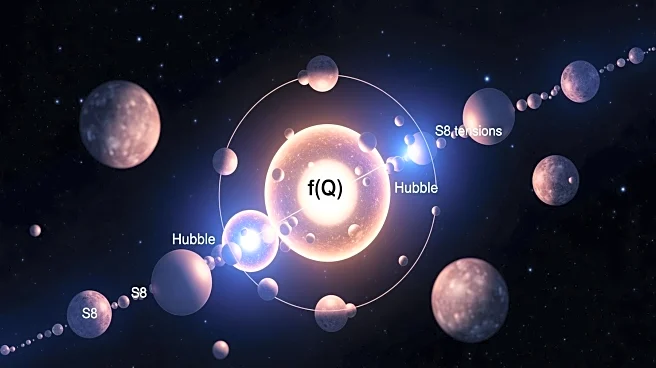What's Happening?
Researchers have proposed the f(Q) gravity model as a potential solution to the Hubble constant (H0) and S8 tensions observed in cosmological data. The model incorporates a Power-Law Tangent-Hyperbolic
approach, aiming to address discrepancies in measurements from different datasets, including DESI DR2 and cosmic chronometers. By employing a Markov Chain Monte Carlo method, the study seeks to constrain model parameters and improve the agreement with empirical data, offering a new perspective on cosmological challenges.
Why It's Important?
The f(Q) gravity model represents an innovative approach to resolving longstanding tensions in cosmology, which have implications for understanding the Universe's expansion and structure formation. By potentially reconciling discrepancies in Hubble constant measurements, the model could refine our understanding of cosmic evolution and the role of dark energy. This advancement may influence theoretical frameworks and observational strategies in cosmology, contributing to more accurate predictions and models of the Universe.
What's Next?
Further research and analysis are needed to validate the f(Q) gravity model's effectiveness in resolving cosmological tensions. As scientists continue to test and refine the model, it may lead to new insights into the fundamental forces and components of the Universe. The ongoing exploration of alternative cosmological models will likely drive innovation in both theoretical and observational astrophysics, shaping future research agendas and technological developments.











